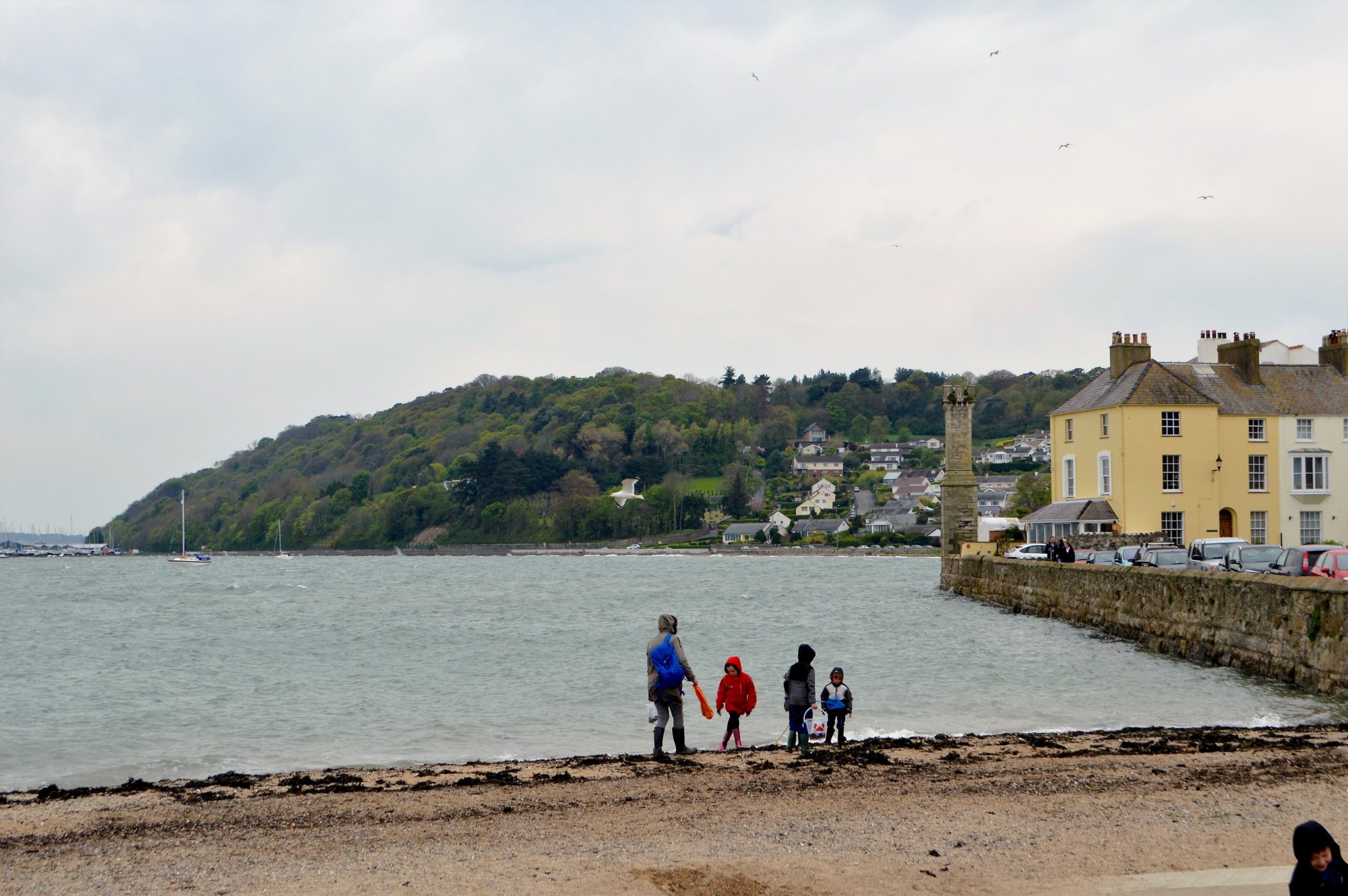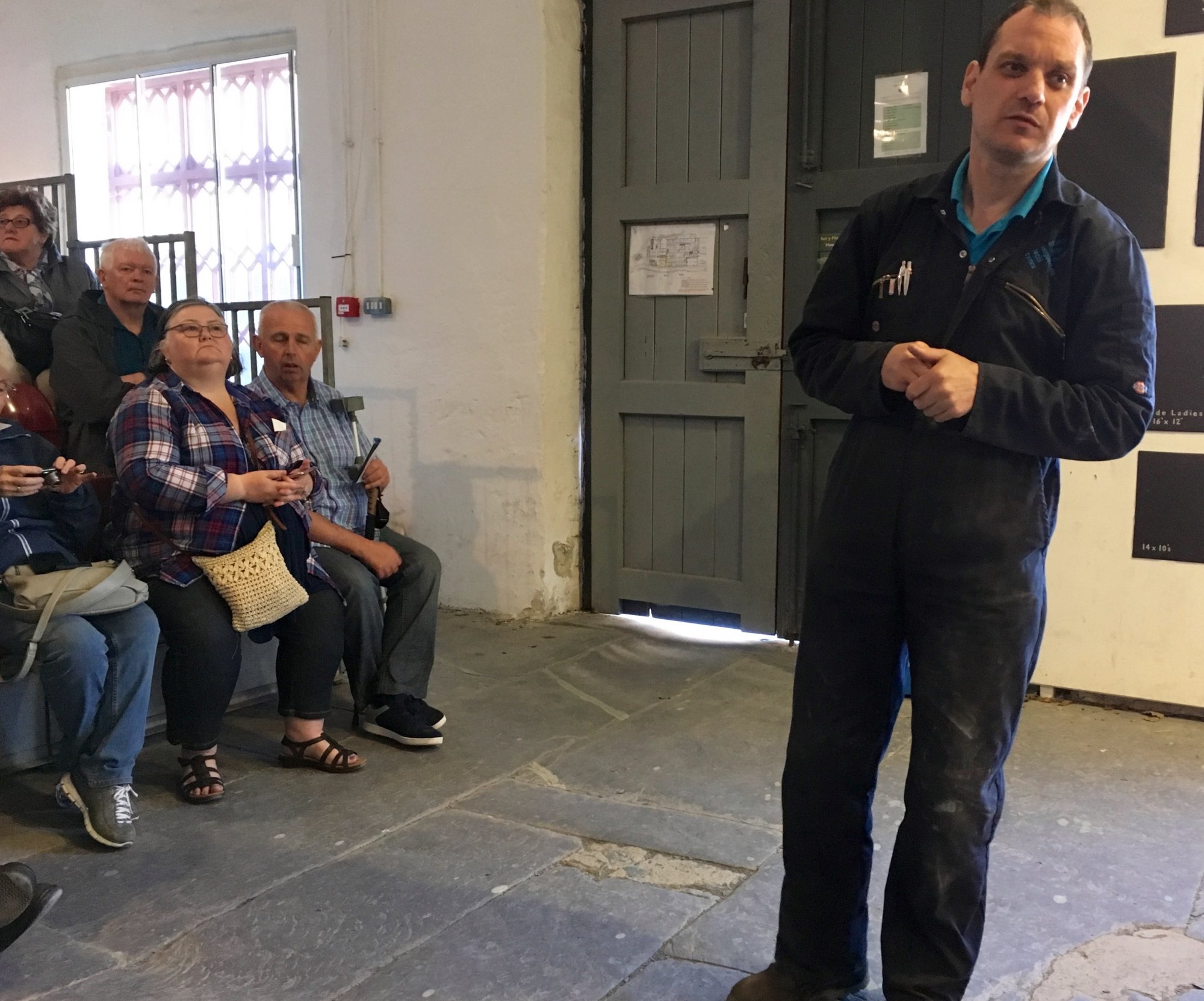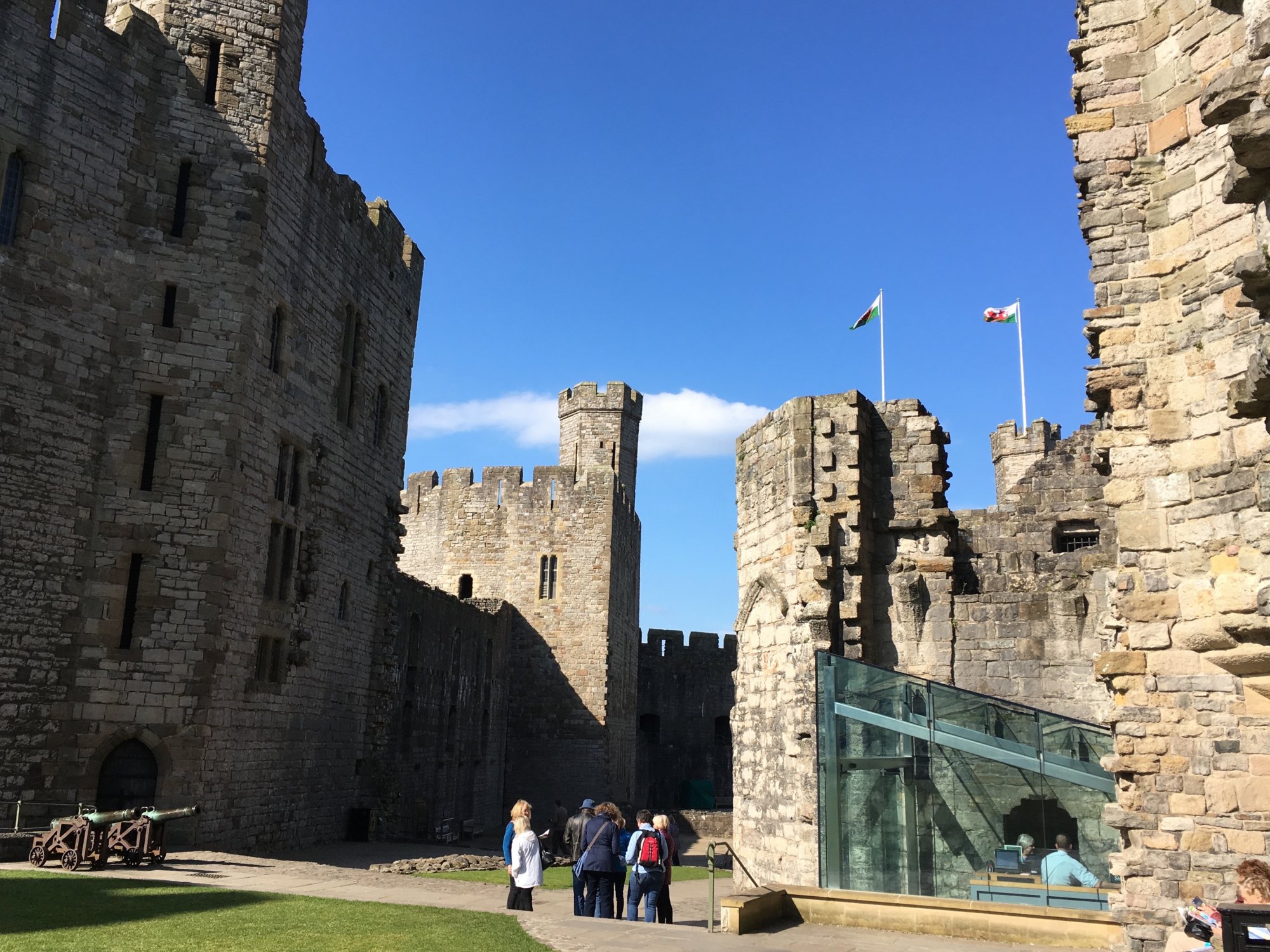FULS/FLHS Trip to Wales 30 April to 4 May 2017 – A Northern Perspective
By Doreen McBride
“Yon trip to North Wales was ‘dead on!'” was the unanimous verdict of those who went on the trip to Wales.
SUNDAY, April 30
We northern ones joined our southern brothers and sisters in time to catch the first ferry from Dublin to Holyhead on a dull Sunday morning. The crossing was so smooth even those of us who are prone to sea-sickness enjoyed a hearty breakfast and the joy of meeting old friends.
We landed in Wales, piled into ‘our’ bus and met our guide, Amanda. She was well organised, knowledgeable and good humoured, everything you’d want of a guide.
The weather was reasonable, that is by Irish standards. It was cold and cloudy but, and this is important, dry! We set off on a tour around Holy Island, which is separated from the Isle of Anglesey by a narrow, winding channel. It’s called ‘Holy’ because it has a lot of standing stones, burial cairns and other religious sites. Unfortunately, like almost everyone else on the bus, I couldn’t stay awake. From what little I saw Holy Island looked picturesque. It has a variety of habitats.
We had a one hour stop at Beaumaris, an old Viking settlement that developed in 1295 when Edward 1 commissioned the castle as part of a chain of fortifications around the North Wales coast. It’s called Beaumaris because the builders were French and they called it ‘beaux marais’, which means ‘beautiful marshes’.
Beaumaris is classified as a World Heritage Site. It’s one of the finest examples of late 13th century and early 14th century military architecture in Europe.
 |
 |
Plas Newydd belonged to Lord Uxbridge’s family from 1470 until it was presented to the National Trust in 1976 after which the house and grounds were opened to the public. It is well worth a visit.
 |
 |
What a day! We were up bright and early for a coach tour along the North Coast of Wales. We passed through Bangor, Conwy, Llandudno, Colwyn and spectacular scenery on our way to Chester, one of the most complete walled cities in Britain.
The sun came out during our guided tour, which included a walk round the walls, a look at the Roman Amphitheatre and the black and white buildings before we embarked on a tour of the cathedral. The tearoom connected to the cathedral provided reasonably priced, delicious lunches.
 |
 |
 |
The museum was interesting but after a quick look we developed the disease known as ‘museumitis’ so escaped out into the sunshine. There we watched a busker with a dog that stood on its hind legs and beat perfect time to music.
Our next visit was to Llangollen to meet the famous Ladies of Llangollen two Irish ladies, Sarah Ponsonby and Eleanor Butler, who became leading socialites in the late 18th Century. Imagine! Two 18th Century suspected of being lesbians! Fancy that! We were given to option of either visiting their graves in the local churchyard, or their house, Plas Newydd. We opted for the church. It was beautiful and contained a plaque commemorating the ladies. We were startled to find they wore headgear resembling bowler hats!
 |
 |
TUESDAY 2nd MAY
Great excitement! We went for a ride on a steam train from Porthmadog to Blaenau Ffestiniog, which is at the foothills of Snowdonia! Steam trains are dirty, smelly, environmentally unfriendly and completely marvellous! The sheer excitement of seeing a steam engine puffing away and blenching smoke is fantastic. The little train chugged along on the narrow-gauge track through breath-taking scenery. The whole experience was magical, although poor JJ complained he had to sit on seats resembling orange boxes and his backside felt it was dead! He was unlucky. Our seats were comfortable and we travelled without suffering from something resembling rigor mortis!
 |
 |
 |
 |
Lloyd George’s grave is difficult to reach. It’s down a steep bank in a quiet wood beside a river. We were warned to be careful and not slide into the water.
 |
 |
WEDNESDAY 3rd MAY
We began the day with a visit to Llanberris Slate Museum. It’s definitely a case of beauty and the beast. The surroundings are beautiful, the lives of the slate miners beastly. They had to extract slate from the quarry by boring holes into the rock, filling them with dynamite, setting a fuse and getting safely away – fast! The fuses weren’t very accurate. They often went off prematurely and blew up the miners. There was no compensation for death or injury. Being blown up wasn’t the only danger. Splitting the hunks of rock into slates and cutting them to size filled the place with dust causing lung diseases. We were given a demonstration of splitting slate by a very humorous demonstrator. He was hilarious!
On leaving the old slate mine we travelled through spectacular countryside to Bodnant Gardens, via Betws y Coed.
Rhododendrons and azaleas were in full bloom in Bodnant Gardens. I haven’t got the words to describe how much we enjoyed this visit. The garden is out of this world. We left reluctantly and headed for the walled town of Conwy and Conway Castle.
 |
 |
 |
 |
THURSDAY 4th MAY
We visited Caernavon Castle before heading for Holyhead Port and the Maritime Museum, where we were delighted to meet our new friends, the Mayor of Holyhead and the two directors of the Museum. Alas! It was time to catch the ferry for home.
 |
 |
 |



